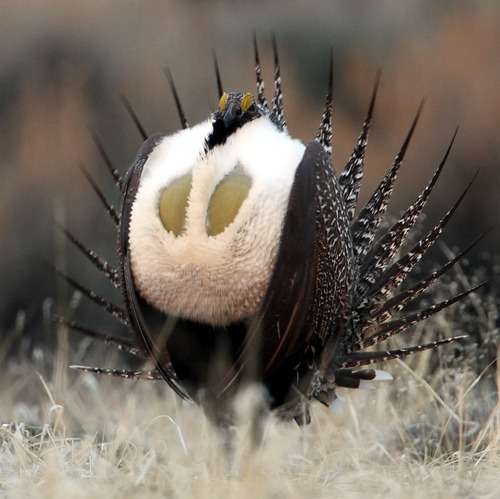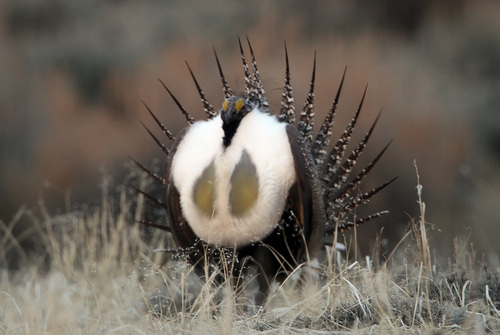This is an archived article that was published on sltrib.com in 2014, and information in the article may be outdated. It is provided only for personal research purposes and may not be reprinted.
Sagebrush is apparently good for more than a rebellion.
Last year, there were more than 5.3 million visits to BLM sagebrush lands in Utah — more than in any other Western state.
Those campers and hunters and hikers generated $39.2 million for local communities within 50 miles of recreation sites on sagebrush lands. The total economic impact of recreation on Utah's sagebrush lands was $59.6 million in 2013.
A new study from the Western Values Project and the Pew Charitable Trusts found that Westerners not only enjoy visiting the sea of sage, they also spend a lot of money while they do.
At the same time, that heavy recreation use puts fun-seekers smack in the middle of the debate about whether to place the sage grouse on the endangered species list. The groups' report on the economics of sagebrush is meant to bolster the case for preserving sage grouse habitat.
"It's clear that a healthy sagebrush ecosystem is an important economic driver for Western economies," said Ken Rait, director of Pew's U.S. public lands project. "Protecting greater sage grouse habitat is not just wise conservation policy, but also sound economic policy for the West."
Using information from 2013, ECONorthwest analized the value of recreation on 61 million acres of Bureau of Land Management sagebrush in 11 states. Researchers found that 13.8 million visits on those federal lands generated $623 million within 50 miles of the recreation sites.
The report shows that 22 percent of the 61.7 million overall visits to BLM land were on sagebrush lands.
Utah certainly has its fair share of sagebrush sea — 9.8 million acres according to the report. But only 47 percent of it is on BLM land. Nevertheless, Utahns seem to use the state's sagebrush lands more heavily than their neighbors do.
Most visitors traveled to BLM sagebrush to camp; 30 percent of Utah's recreationists pitched a tent or parked an RV. Big game hunting was second at 11.5 percent, followed distantly by car travel at 4.9 percent and hiking, walking or running at 4.7 percent.
The importance of sagebrush habitat is being studied from many levels as the U.S Fish and Wildlife Service prepares to make a decision on whether the greater sage grouse should be listed under the Endangered Species Act. A decision is required by Sept. 30, 2015.
"Our report is a first step in filling the gap in knowledge about the use and economic significance of recreation associated with sagebrush ecosystems," the report states. "Although our analysis does not focus extensively on the subset of sagebrush lands that currently serve as sage grouse habitat, the information in this report may be useful to policymakers, stakeholders and the general public as plans to conserve sagebrush habitat are developed."
Terry Messmer, a wildlife specialist with the Quinney College of Natural Resources at Utah State University, says sagebrush lands in Utah run from 4,000 to 8,000 feet in elevation and include two distinct zones: sagebrush steppe and desert sage.
Each provides different habitats for a wide range of wildlife and recreationists.
"Hunting and camping — you name it," Messmer said. "They are also important watersheds and grazing areas. This report is only focused on the economic impacts from recreation, but there are many other economic impacts."
Messmer noted that just considering the greater sage grouse for the endangered list has in itself generated a boost to the West's economy.
"Close to a quarter of a billion dollars has been raised to focus on ways to prevent the sage grouse from being listed," he said.
Contributions to the U.S. economy from sagebrush recreation visits on BLM-managed lands equal $283 million in personal income and a total economic output of more than $1 billion.
Twitter: @BrettPrettyman





